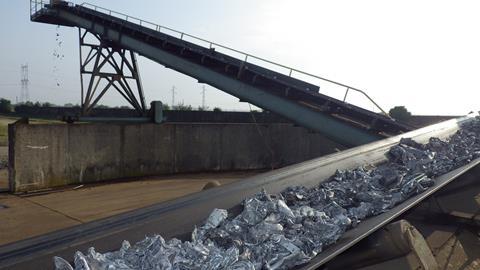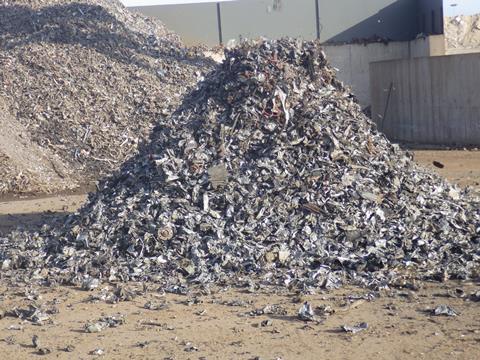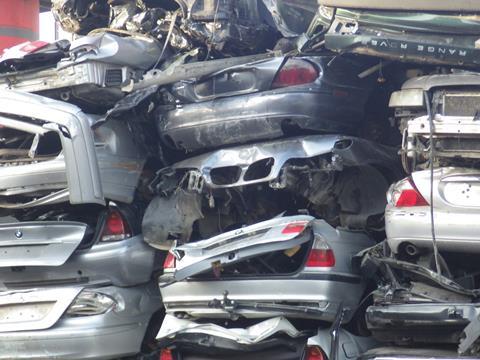Steel is not only familiar and affordable, it’s also highly recyclable, so James Bakewell asks whether there are any more gains to be made in making it more sustainable

While most environmental regulations for the automotive industry have typically focused on the fuel efficiency of vehicles and the greenhouse gasses they emit, the true impact a vehicle has on the planet can only be gauged by considering its entire life cycle, stretching from its production and its use to what happens at the end of its life (recycling and/or disposal) phases.
As such, says the head of marketing automotive at Tata Steel, Sander Heinhuis, the recyclability of the materials used for the production of vehicles has been, and will continue to be, particularly important to carmakers. He continues: “This is, for instance, legislatively driven by the [European Union] end-of-life vehicle directive, which prescribes recyclability targets, but more and more it is being driven by the desire of carmakers to support sustainable development goals.”
Highly recyclable
A mainstay of automotive production for over a century, steel is highly recyclable. The Steel Recycling Institute says that each year, the steel industry recycles more than 14m tonnes of it from end-of-life vehicles – equivalent to nearly 13.5m cars. It adds that almost as much steel is recycled from cars each year as is used to produce new vehicles.

There’s more good news, as the increasing use of high-strength grades of the metal has done little, if anything, to compromise recyclability. Heinhuis explains: “In general, the use of advanced high-strength steel and ultra-high-strength variants does not pose any additional challenges for the recycling of automotive steels, since almost all of the alloying elements they contain can be controlled during steelmaking.”
The challenge then, according to scrap quality and steel recycling engineer at ArcelorMittal Global Research and Development, Philippe Russo, is not simply to recycle scrap steel, but to ensure that, in doing so, the maximum value is extracted from it.
When it comes to recycling process scrap, for instance, Russo says that carmakers and their suppliers should make sure that the different grades of waste steel they produce are kept separate from one another. This ensures that the scrap can be recycled easily into products that demonstrate similar performance and are therefore of equivalent value. Heinhuis concurs: “Certainly, separating zinc-coated scrap from uncoated scrap is beneficial, but so is separating forming steels from advanced high-strength steel and ultra-high-strength steel.”
Further, carmakers and tier suppliers can take steps to reduce the amount of scrap steel they produce in the first place. ArcelorMittal, for instance, has been working to develop advanced nesting techniques that reduce the amount of material required for the manufacture of blanks. OEMs that produce A-pillars, for instance, often nest the monolithic blanks they use for these parts face-to-face on the coil. The net weight of each monolithic blank is 5.6 kg, but due to wastage, 10.6 kg of steel is required to produce each part. Effectively, 48% of the steel in a coil is scrapped and recycled.
Using advanced nesting, OEMs can create two sub-blanks instead of a single monolithic blank. This enables the position of the blanks to be optimized on the sheet and reduces the amount of steel required. The sub-blanks are laser welded together to form one part with the same mechanical properties and the same net weight as its conventionally blanked counterpart. Using this approach, Arcelor Mittal says that the amount of material required can be reduced by almost 30%, yielding a reduction in costs of around €1.00 per car. At the same time, CO2 emissions associated with manufacture of the part are cut by around 30%.
“The use of advanced high-strength steel and ultra-high-strength variants does not pose any additional challenges for the recycling of automotive steels” – Sander Heinhuis, Tata Steel
Gone in 45 seconds
If process scrap is relatively easy to recycle, so is scrap steel harvested from end-of-life vehicles. Here too, the goal is to make marginal gains in the efficiencies of the processes used.
At the scrap yard, reusable parts – such as doors, seats, bonnets, boot lids, windows and wheels – are removed from cars. During this same process, the cars are drained of fluids and mercury switches are removed. The remaining hulks then enter the shredder. During a process that lasts only 45 seconds, the shredder rips the car into chunks of steel and nonferrous metals, as well as some fluff composed of residual materials such as rubber, glass and plastic. The iron and steel are magnetically separated from the other materials and then shipped to secondary processors (often scrap brokers) or steel mills, where they are used to produce new steel.

Russo says: “In Europe, 98% of steel from end-of-life vehicles is recycled because it is quite easy to collect with a simple magnet. We are losing 1% of the metal as fine dust in the shredding process and 1% is oxidised in the slag of the electric arc or basic oxygen furnace.”
The copper found in components such as the wiring in end-of-life vehicles can cause issues, however. Its presence in steel scrap, even just residual amounts, can limit the applications for which the resulting recycled steel can be used. Heinhuis says: “The primary challenge with the removal of copper is one of cost versus benefit. Generally, it is quite difficult – think about the wiring within car doors – and since the presence of copper is tolerable in some steel products, there is less incentive to remove it.”
Russo adds: “One solution to reduce this copper content could be to replace copper in electrical motors and in the connecting wires with aluminium, which is lighter and cheaper than copper, and has no impact on the quality of the ferrous scrap.”

What improvements can the steel industry make in the meantime? The head of marketing and sustainability at ArcelorMittal Global Automotive & Mobility Solutions, Frederic Painchault, says: “Global demand for steel is expected to continue growing for several decades and currently this can’t be met with recycled steel alone. So, for the steel industry, the challenge is to produce steel in a more sustainable way.”
Russo adds: “We know that the amount of end-of-life ferrous scrap available to us will increase with time, so we are presently transforming our steelmaking processes to use more obsolete scrap than ever before, especially in the basic oxygen furnace, in place of iron ore and coal.”








































No comments yet